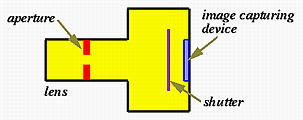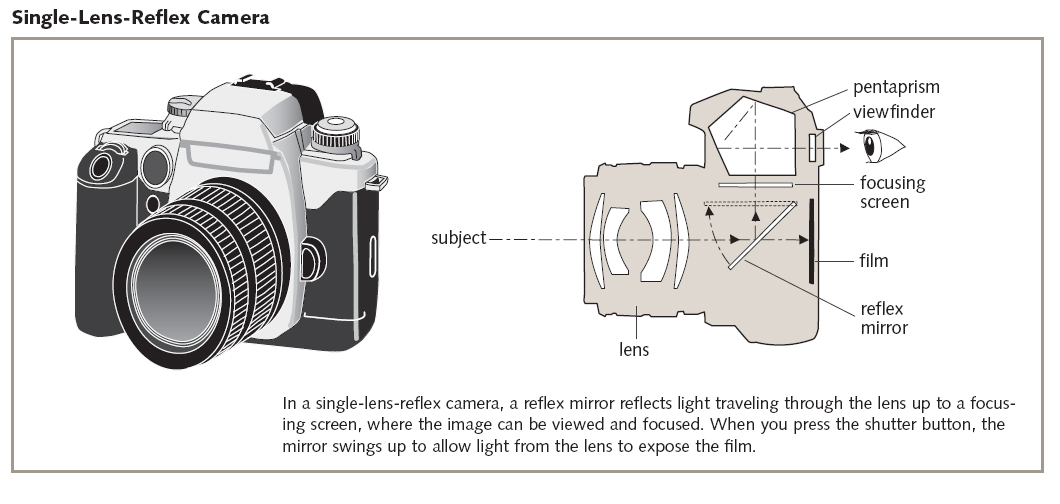
Digital Photography

We begin with a light tight box to hold the film and carry it around from subject to subject.
The shutter controls when the light enters the camera and for how long it enters. A good camera will have some way of adjusting the time the shutter is open plus there has to be some type of release for the shutter.
The lens lets in light. The larger the lens the more light. The lens also effects how large the image appears based on the focal length of the lens.
The aperture is located in the lens and is a set of leaf like piece of metal that can change the size of the hole that lets in light. We consider the lens to be part of the shutter as we do not actually need a lens to focus an image if we have a small enough hole to let in the light.

.jpg)
.jpg)
.jpg)
Tips for Better Photo Composition
Pay attention to framing.
Nothing ruins a nice photo faster than distracting elements in the background. Don't get so focused on the photo's subject that you ignore what else is going on around them. Watch out for poles, trees and power lines, and look all the way around the edges of the frame, asking “Is this what I really want in my photo?"
Every image has a foreground and a background.
How you want people to view your picture determines what you do with the foreground and background. For example, zooming in, and choosing a large aperture setting, blurs the background while keeping your subject sharp. This is a pleasing effect for portraits. Conversely, zooming out to a wide angle setting, and choosing a small aperture, allow you to show the subject and their surroundings in more equal focus. Have your subject prominent in the foreground, and use the background to tell more about the subject or the environment.
Change your angle of view.
Try kneeling, or even putting the camera on the ground. Climb a flight of stairs so you're higher than the subject you're photographing. Digital cameras with twist and tilt LCD screens are ideal for this. Changing angles provides a fresh perspective, and makes for a more dramatic photograph.
Look for elements in a scene that draws a viewer's eyes through the photo.
A winding path, a row of telephone poles or even a line of chairs at the beach can serve as elements in a good photo.
Keep your eyes open for patterns in nature or man-made objects.
Interesting photos can be made of the waves and patterns created by drifting snow, a flock of birds flying in formation or pipes stacked at a construction site.
Try getting in close.
Look for texture in the wrinkles of a face or the bark of a tree. Hands can say a lot about a person. Pay attention to the details.
Cropping brings a photo to life.
If you edit photos on your computer, you are no longer constrained by the standard 4 x 6-inch, 5 x 7, or 8 x 10 formats. Look at each photo carefully and think about what you really want people to see and react to, then crop everything else away. Try some unusual shapes, like wide horizontals or narrow verticals.
Remember: variety is the spice of photography. Composition is only limited by your imagination. Experiment, have fun, and keep learning!